Woolworth Building and the 1960 San Antonio Civil Rights Movement
Introduction
Text-to-speech Audio
Images
Men standing at counter - first day of integrated lunch counters
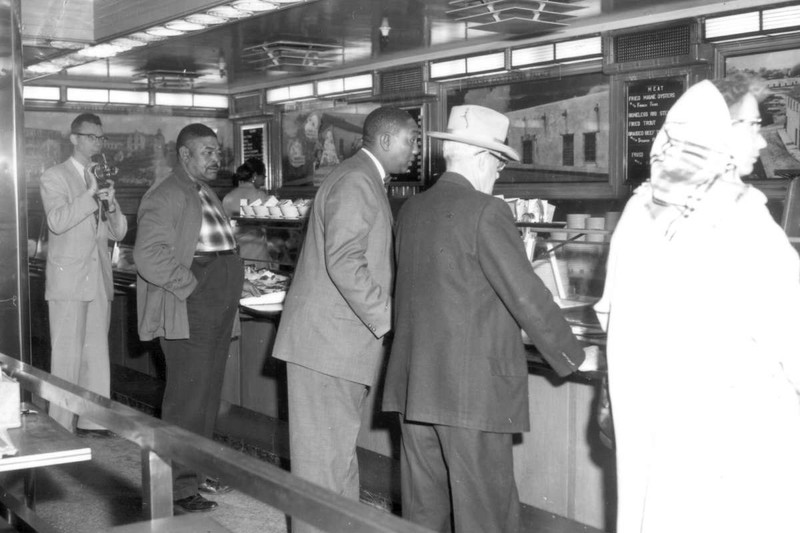
man standing outside woolworth
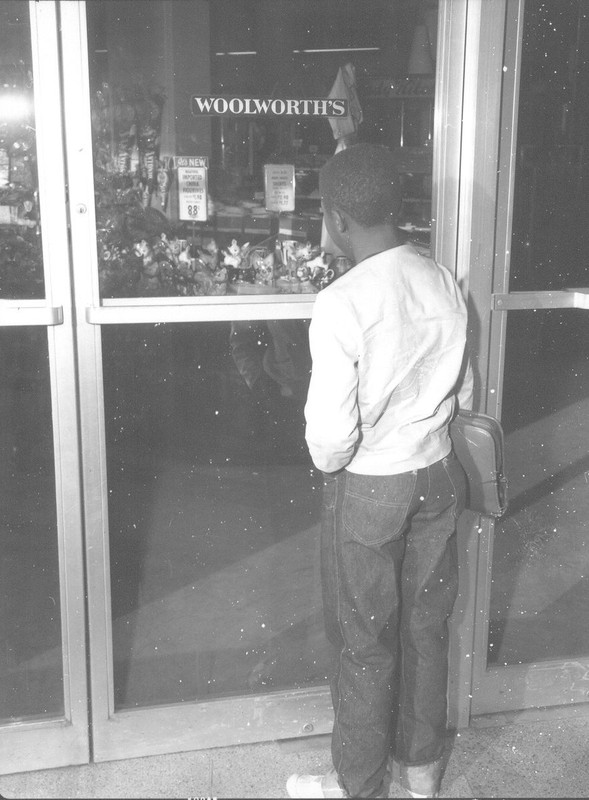
First day of lunch counter integration at Woolworth's in San Antonio

Two men standing at lunch counter
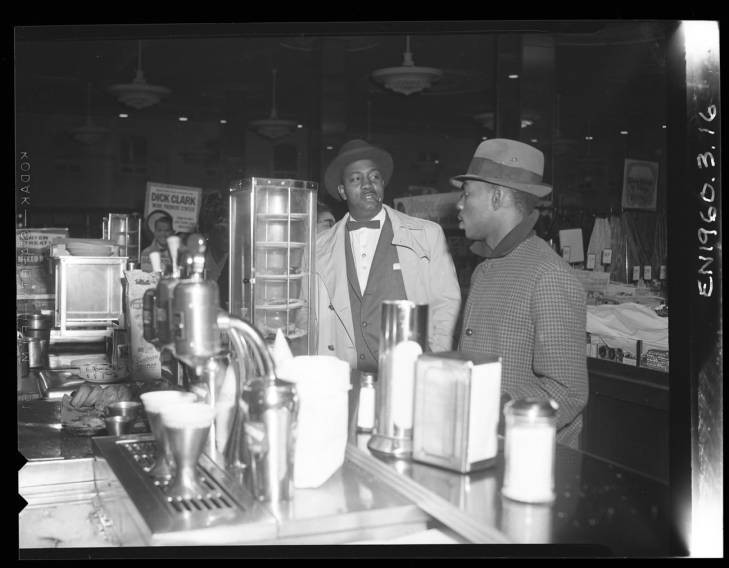
Group celebrating on first day of lunch counter integration, Woolworth's San Antonio
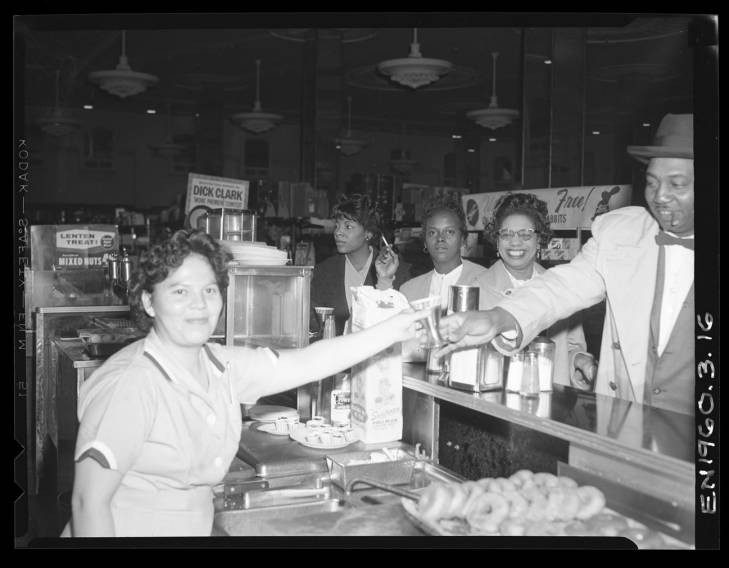
Two men eating lunch on the first day of desegregation at Woolworth's in San Antonio
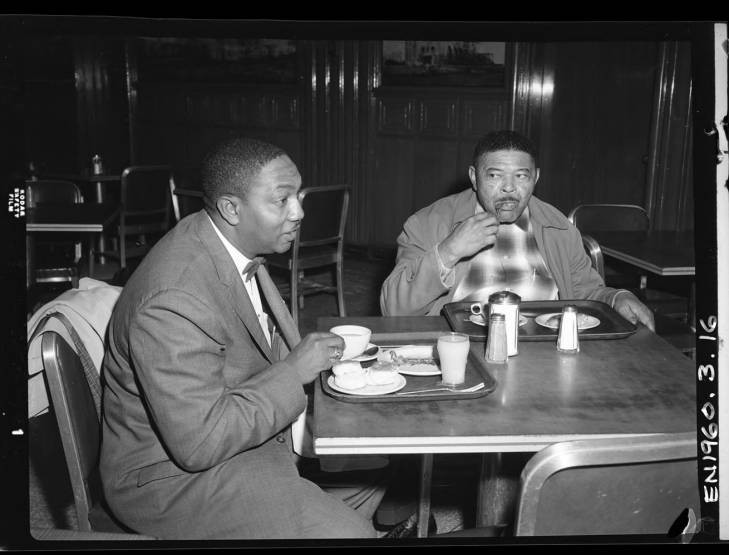
Backstory and Context
Text-to-speech Audio
During the early 1960s, demonstrations were taking place across the country to demand the end to racial discrimination at lunch counters and other establishments. Inspired by a wave of successful sit-ins that began with the February 1 1960 protest at Woolworth's in North Carolina, students and others in Texas joined the movement. After choosing locations, Texas protesters followed the same strategies of non-violence and refused to get up from their seats even after being denied service, experiencing violence, or being threatened with the prospect of being arrests.
While many cities in the South saw violence in response to civil rights protests, the situation in San Antonio was more nuanced. Economic growth and providing at least a semblance of fairness and tranquility seemed to be the top priority for city officials and business leaders in San Antonio, so the police rarely responded with violence as occurred in some Southern cities. In previous years and prompted by a lawsuit from the NAACP, the City Council in 1954 ordered an end to segregation in municipal parks and golf courses. However, San Antonio municipal swimming pools remained segregated, and while San Antonio schools officially accepted the Brown v. Board of Education, the city followed a gradual approach to integration.
Reverend Claude Black said that the city followed a duplicitous approach with the goal to "to give it to you and not give it to you." This "pattern," he explained "made it most difficult to develop the kind of unity that you need in the Black community in order to develop the opposition. Any time you give people in desperate conditions a glimmer of hope, you defuse them." Reverend Claude Black further explained, "San Antonio did not have that raw racist expression, but you did not have either the dignity of being a person, a citizen of the community . . . . It was not difficult for a Black person to develop inwardly a tremendous amount of hostility toward the community."
This environment of accepting only gradual change and seeing civil rights as an area of compromise instead of a moral right helps to explain the events that would unfold at San Antonio's Woolworth's lunch counter in March 1960. As sit-ins spread through the South,local business leaders in San Antonia decided that the city's restaurants would not serve protesters who started sit-ins and instead indicated that they would support more gradual measures such as meetings. Mary Andrews, a college freshman at Our Lady of the Lake College and the NAACP's youth group president, took it upon herself to send letters to six stores in downtown San Antonio asking them to desegregate lunch counters. Black ministers started to visit local businesses to negotiate for the integration of downtown lunch counters.
The Mayor of San Antonio, J. Edwin Kuykendall wanted to prevent the kinds of protests and negative press in other cities. He suggested desegregation was a moral issue and as a result, church leaders should take up the issue instead of the city. The mayor asked clergy to meet and talk with business leaders about gradual desegregation. Lead by Reverend C. Don Baugh local church leaders convened several meetings with business owners to find a solution. Unfortunately, these initial meetings did not include Black leaders or organizations.
On March 13, 1960, a desegregation rally was attended by 1,500 participants where the Reverend Claude Black announced that on March 17, demonstrators would target businesses if they continued to refuse service to African Americans. Facing mounting pressure from the NAACP and local leaders, the city again held a meeting on March 15, 1960, but did not include many Black leaders.
One day later, on March 16, 1960, four African Americans were served at the Woolworth's lunch counter. On the 19th, Blacks and white citizens celebrated the desegregated lunch counter with a banquet. The situation in San Antonio demonstrated a measure of change that Black leaders would later see as more superficial than substantive. Looking back on the situation, Baugh said that excluding them "was paternalism. The white man was once again needing to see what he was willing to give the Black person. At the time, I didn't see it."
Sources
Preservation Texas. Accessed October 6th 2020. http://www.preservationtexas.org/endangered/woolworths/.
Integration of downtown lunch counters, March 16th 1960. Accessed October 18th 2020. https://digital.utsa.edu/digital/collection/p16018coll13/id/231.
Goldberg, Robert A. . Racial Change on the Southern Periphery: The Case of San Antonio, Texas, 1960-1965. The Journal of Southern History, vol. 49, no. 3. Published August 1st 1983.
New York Times March 14th 1960. .
San Antonio Register March 18th 1960. .
San Antonio Express March 14th 1960. .
https://digital.utsa.edu/digital/collection/p16018coll13/id/231
https://digital.utsa.edu/digital/collection/p16018coll13/id/231
https://digital.utsa.edu/digital/collection/p16018coll13/id/231
https://digital.utsa.edu/digital/collection/p16018coll13/id/231
https://digital.utsa.edu/digital/collection/p16018coll13/id/231
https://digital.utsa.edu/digital/collection/p16018coll13/id/231
